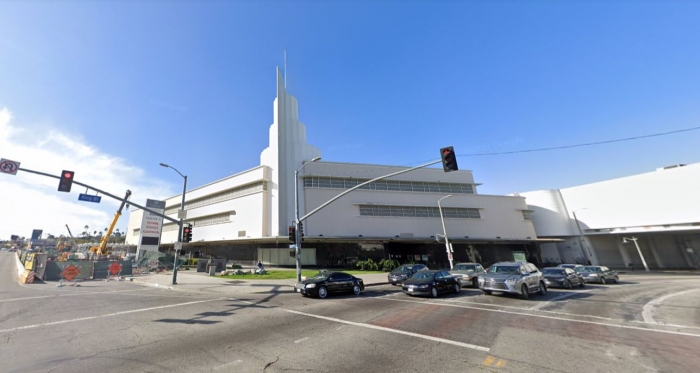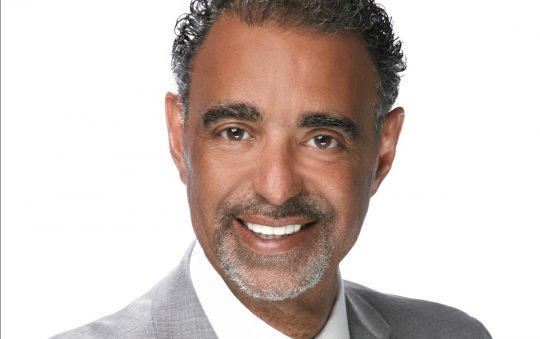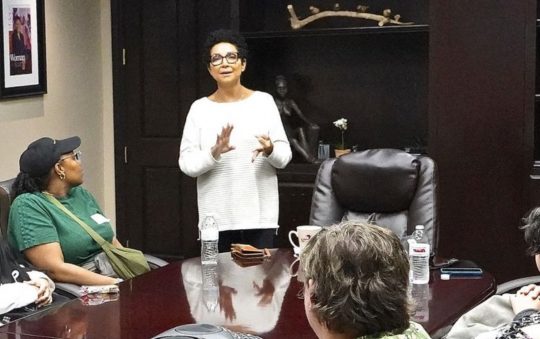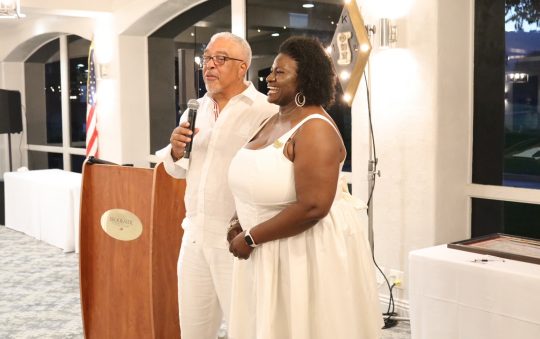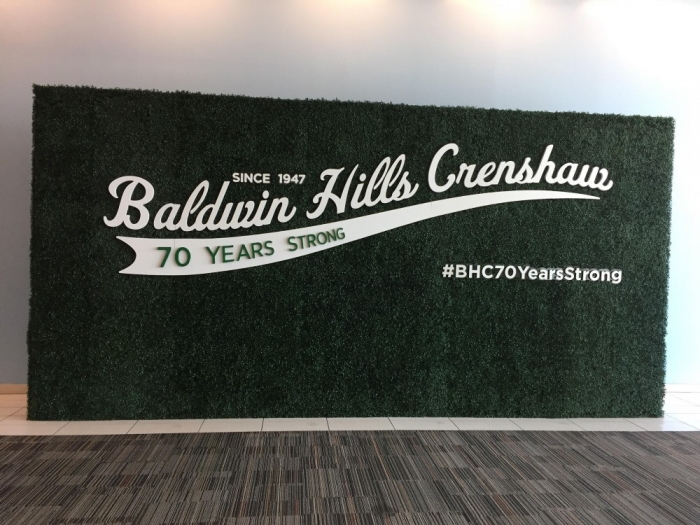
Asher Abehsera, founder and CEO of LIVWRK, talks candidly about his purchase of the mall, his commitment to community inclusion, his partnerships with CIM and the Kushner Family.
Abehsera wants people to understand he is not from New York. In fact, he was born and raised right here in Los Angeles. He explains he grew up in the Pacific Pan Park area (Fairfax District), and his first job was at a gas station on La Brea at the age of 15. Abehsera’s mother is fifth generation Angeleno and his father is of Moroccan (North Africa) decent, and has spent his entire life embracing the diversity and multi-cultural lifestyle he grew up a part of.
These days, abehsera finds himself and his company, LIVWRK Development, in the middle of a heated debate regarding his company’s plans to purchase the Baldwin Hills Crenshaw Mall; a vastly outdated shopping mall built in 1947 in the heart of the Crenshaw Corridor, and entrenched in heart of the African American Community.
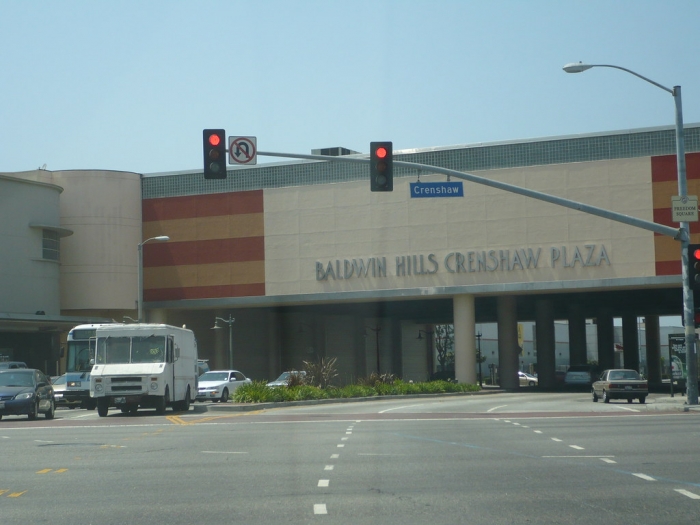
In early 2005, a group of investors, led by Quinton Primo (one of the few African American owned investment firms) Capri Capital Partner, purchased the shopping mall. In 2010, the mall added new interior embellishments, a modern and a larger food court on the first level. Capri has also redesigned the theme Baldwin Hills Crenshaw Bridge to a glass see-through bridge overlooking Crenshaw Boulevard. Macy’s was renovated and Walmart opened inside the mall. Other new tenants came into the mall including Cinemark XD Extreme multiplex cinema, Pink, Victoria Secret, Forever 21, and Lane Bryant. The mall got new restaurants to come into the complex including Buffalo Wild Wings, Post & Beam and Chipotle Mexican Grill. Unfortunately, Walmart made a sudden and unexpected exit from the mall on January 17, 2016 (ironically, on the MLK, Jr. Day weekend), and on November 7, 2019, Sears announced it would be closing its doors as part of a 96-store nationwide closing. Sear’s closed in February of 2020.
In 2017, Capri got a draft Environmental Impact Report (EIR) processed and approved by the city council. In 2018, the site received entitlements to transform the shopping mall into a 24-hour mixed-use complex with commercial, office and residential structures. The expansion on the 43 acres site would include: a luxury 400-room hotel and resort, an office tower with a penthouse level, an open-air plaza, mid-to-high upscale restaurants, acres of public space, a multi-story parking structure and residential units with low-rise condominiums and apartments.
Despite the early success of the mall, the investor group led by LACERA (Los Angeles County Employees Retirement Association) grew weary of the investment and made the decision to sell the mall. In April, 2020, the CIM Group agreed to buy the mall for more than $100 million. It cited the mall’s proximity to a soon-to-open light rail station, and its plan to convert the former Sears and Walmart into offices, in order to drive more foot traffic into the remaining retail stores. However, by June 2020, the sale was dropped due to community opposition to the plan without the residential component. The mall has been closed for much of 2020 due to the COVID-19 pandemic.
LIVWRK and its partners, DFH, are now proposing to purchase the mall, and at press time the closing seems to be eminent. “LIVWRK – is a development company that invests. in communities where we look for themes to bridge gaps between infrastructure and culture,” stated Abehsera

But, despite all of his good intentions and promises to bringing forth a quality and inclusive development, many in the community have been reluctant to support LIVWRK as the buyer for the mall. Rev. William Smart of SCLC says “This mall is a landmark building within our community and I want to see a group of African American Investors own and be afforded this opportunity within our community.”
The other issue that has plagued LIVWRK since it was announced that they were the selected purchaser at the end of a long and protracted bidding and proposal process, is there connection to Donald Trump and Jared Kushner, as well as the previous buyers the community opposed with was CIM. To these issues, Abehsera explains “We have never had any relationship with the Trump Organization in any capacity or realm – never happened.”
As it relates to Jared Kushner and his family company, Abehsera acknowledges that when LIVWRK first started, “We had done five separate deals with the Kushner’s, of which in the middle of some of those deals, they were no longer involved.” Abehsera says that in three of those larger projects, his Kushner group contact left the business and they stopped working with them all together. Abehsera says they have no intention of doing any future deals with them. He explains, “If they wanted to come into this deal, we would have to say NO; we have no future or active deals with them.”
Abehsera also wants the community to know that the Jared Kushner who he was in business with is far different from the Jared Kushner of today. He explains, “At the time when we were doing business, they had no association with any political platform what so ever.” He says Jared Kushner was a democrat, a liberal, who did a lot of community work in soup kitchens, funded charity programs and was far different from the guy we see today.
“This thing came out of the sky, that my partner ended up working for his father-in-law who ended up becoming the President of the United States. This was not even in the cards or in the universe I was in,” he explains.

As for CIM, he does acknowledge that he does do business with them. And explains out of respect for their relationship, he called the highest-ranking executives in the firm, informing them there was no opportunity for collaboration on this project; which he says they understood and wished him well.
Damian Goodmon, who led the opposition against CIM, who withdrew their offer to purchase the mall, sees it differently. “LivWrk will lie, deny and buy-off some questionable Black “leaders” to confuse and an attempt to hoodwink the people. But the facts are what they are. A google search of “LivWrk” and “Kushner” returns over 90 hits. Five out of the nine projects listed on their LivWrk’s website are partnerships with Kushner Companies, CIM, or both. By the LivWrk CEO’s own words, he talks daily to CIM and Kushner Cos.
This is an attempt by Donald Trump and Jared Kushner’s business partners to take over our Crenshaw mall, and cash in on displacing Black people and Black businesses by using opportunity zones created by Trump. And people should be very concerned, because of the zoning is so generous at the mall site that a literal Trump Tower, with zero parking spaces for the residential units, could be built on the site by right.
Abehsera in his defense says he reached out to Damion before he even offered to buy the mall to congratulate him on his victory, successfully pushing CIM out and offered to meet with him. He provided the Sentinel with an email that he sent to Damion on July 20 of this year, but Damion says he never received it.
What LIVWRK an Abehsera hopes is that they can put all of these past partnership issues behind and focus on bringing forward a state-of-the-art, mixed-use development with community input and community inclusion as part of the overall development. He says this project, in its totality, is going to run between 1.2 and 1.5 billion dollars all in, but he believes its worth creating a development that will be transformative and good for the community and his company as well.
“I like to identify projects that are large and that are impactful, so that when you plant trees for yourself, you plant trees for your neighbor as well. I see a transformative development with input from the community. That will be aesthetically pleasing and economically uplifting for everyone.” He says he has been out in the community, meeting with various community groups, block clubs, community leaders, all in an effort to get to better know the community and for the community to get to better know him. He says he has met with the Empowerment Congress, The Baldwin Hills Estates Association, the Leimert Park Block Club, the Crenshaw Chamber of Commerce, Community Build, McClung Block Club, Cherrywoods Block Club, Baldwin Village Association, and the Crenshaw Manor Residence Association just to name a few.
He has also talked to Councilmember Marqueece Harris-Dawson and while he wouldn’t get into specifics about their conversation, he said that the Councilman was receptive to his ideas and cared first and foremost about what was in the best interest of the community, and that he looked forward to future discussions about the proposed development. The Sentinel also reached out to the Councilman who said he did not want to influence or bias the purchase process in any way, but that he would wait and see how this process unfolded before he got involved.
LIVWRK says they understand the importance of bridging the gap between infrastructure and culture, that you can’t just come to an area and tell people what is good for them and how it’s going to be. Abehsera says he wants and will listen and invites the community to become active participants in the project.
What many people have asked Abehsera and he has asked himself is, why do I want to do this? Knowing about all the previous opposition of this project, why would he or anyone want to invest years of capital, energy and effort into this project?
“What I saw was a community that was being underserved that companies or corporations don’t understand. But what these companies don’t understand, is how explosively good the potential is. I saw an opportunity to make people not be fearful of gentrification, but be excited about a development that makes people look towards hope and pride of how good the community can be and not want to leave,” said Abehsera.
“Before I was awarded the project, I started making calls, I started meeting people; I talked to the councilman, I tried to understand why there was a big gate around the project which makes no sense, and tried to really understand what’s happening and how we can turn this into an opportunity for major growth in the area. I wanted to figure out how we can swing the pendulum to an opportunity of major growth and game changer.”
Another key element of community concern is African American ownership and participation in the project. Asher explains that he does have a group of five African Americans who have been offered an opportunity to purchase an economic interest in the development. While other sources outside of Abeshera say these investors include community organizer Shari Franklin and noted architect Roland Wiley of RAW Architecture. Abeshera says that he cannot reveal the identity of these people without their approval (as of Sentinel press time, Abeshera has not confirmed or denied Franklin, Wiley or any other African Americans as part of the team).
He does say that there is a group of five stakeholders who have been given the opportunity to invest in the project. They will have an unparalleled opportunity to purchase as large a stake in the project as they would like. However, given the massive cost, Abesehra is proposing the development will cost, even a small stake of five-to-10 percent, would be in excess of $100 million.
Abehsera says that these partners will have a say in the design and programming of the development. He says all of potential partners are passionate about doing a great development; that they are African American residents from within the neighborhood and local business leaders with a proven record of serving the community.
Abehsera says he is committed to working with all of the community stake holders to create a development that everyone enjoys and is proud of “My vision is to have a conversation, first, with several of the stakeholders in the community and to collectively come up with themes that we can all agree with. Culturally relevant themes that will pay homage to the rich cultural history of the site but also illustrates the future that can be in a thriving eco system of equality,” he said.
“This is not about checking boxes, this is about getting to know the constituents and having a relationship that the community can feel good about. It needs to be beautiful; it needs to be inviting, it needs to be a place people don’t want to leave.”
Abehsera says local resident are first priority for employment. Having partnerships with the community colleges and high schools, will groom and incubate residents and local businesses that will prepare them to work and flourish within this development.
Abehsera and LIVWRK want the community to know that he is not a fancy guy. “I don’t hide behind lawyers, or lobbyist; I am an approachable guy, I’m available for meetings, conversations and want to speak to the community at their clubs and group meetings and get a chance to get to know each other. Perception is reality but the best perception is the perception you get to build when having a relationship with someone.
Given the track record of the Crenshaw-Baldwin Hills Mall, this is a complicated development with a lot of money at stake and we are sure there is time to figure out who and how this project will ultimately unfold.




